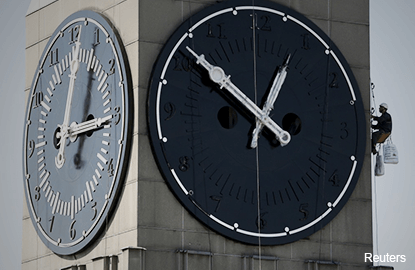
AFTER so much ado about an interest rate increase in the United States, strategists say the US central bank should stop hesitating and finally turn the page on its monetary policy.
The upcoming rate hike by the Federal Reserve, first supposed to come early this year and now expected by December, has been so anticipated by global financial markets that, when it happens, it may be followed by a decline in risk aversion and help support battered emerging currencies.
The idea, which has also taken hold among policymakers elsewhere, goes against conventional wisdom: higher interest rates in the US reduce the appeal of other assets worldwide and would potentially give the US another boost after a year-long rally.
US interest rates have been at rock-bottom for so long, since late 2008, that many warn of the risk of unintended consequences, especially considering the novelty of such a move for a whole new generation of traders.
For many quarters, the so-called lift-off was deemed the greatest risk for emerging markets. But as China’s market woes started to catch eyeballs, many have begun to wonder if a September rate hike would really be that bad.
“The market has priced the fear of a Fed funds increase. When it happens, the dollar should weaken after a small spike,” John Welch, emerging market macro strategist for CIBC, who participated in a monthly Reuters poll on the outlook for emerging market currencies.
This is not just a feeling. Studies on previous rate hikes show that once the Fed moves, the dollar tends to stabilise or even depreciate in the following months, according to Gabriel Gersztein, strategist with BNP Paribas.
This theory has appealed to central bankers gathered for the annual powwow in Jackson Hole last month. Mexican central banker Agustin Carstens said a rate hike would be “very good”.
“If the Fed tightens, it will be due to the fact that they have a perception that inflation is drifting up, but more important that unemployment is falling and the economy is recovering,” Carstens told Reuters in an interview.
Much will depend, of course, on what’s next. Turning the page on the first rate increase will reduce uncertainty only if the next steps are as well telegraphed as the first one, and more importantly, if there are only small, if any, rate hikes in the pipeline for the near future. For most analysts polled by Reuters, it is “important” or “very important” that the Fed raise rates soon if the dollar is to push much higher.
Not raising rates on Sept 17 and waiting until October or December — as most strategists have started to bet — also does not necessarily mean emerging market currencies will weaken. That will also depend substantially on China and the outlook for commodities prices.
But if anything, an assertive Fed could instil confidence among investors. The recent turmoil, after all, would have not been scary enough to change the Fed’s flight plan.
“The timing of the first hike will be important for the markets to see the Fed’s assessment on international turmoil. A delay on the lift-off due to market volatility would not bode well for EM,” said Daniel Weeks, an economist with Garde Asset Management, in Sao Paulo. — Reuters
This article first appeared in digitaledge Daily, on September 7, 2015.